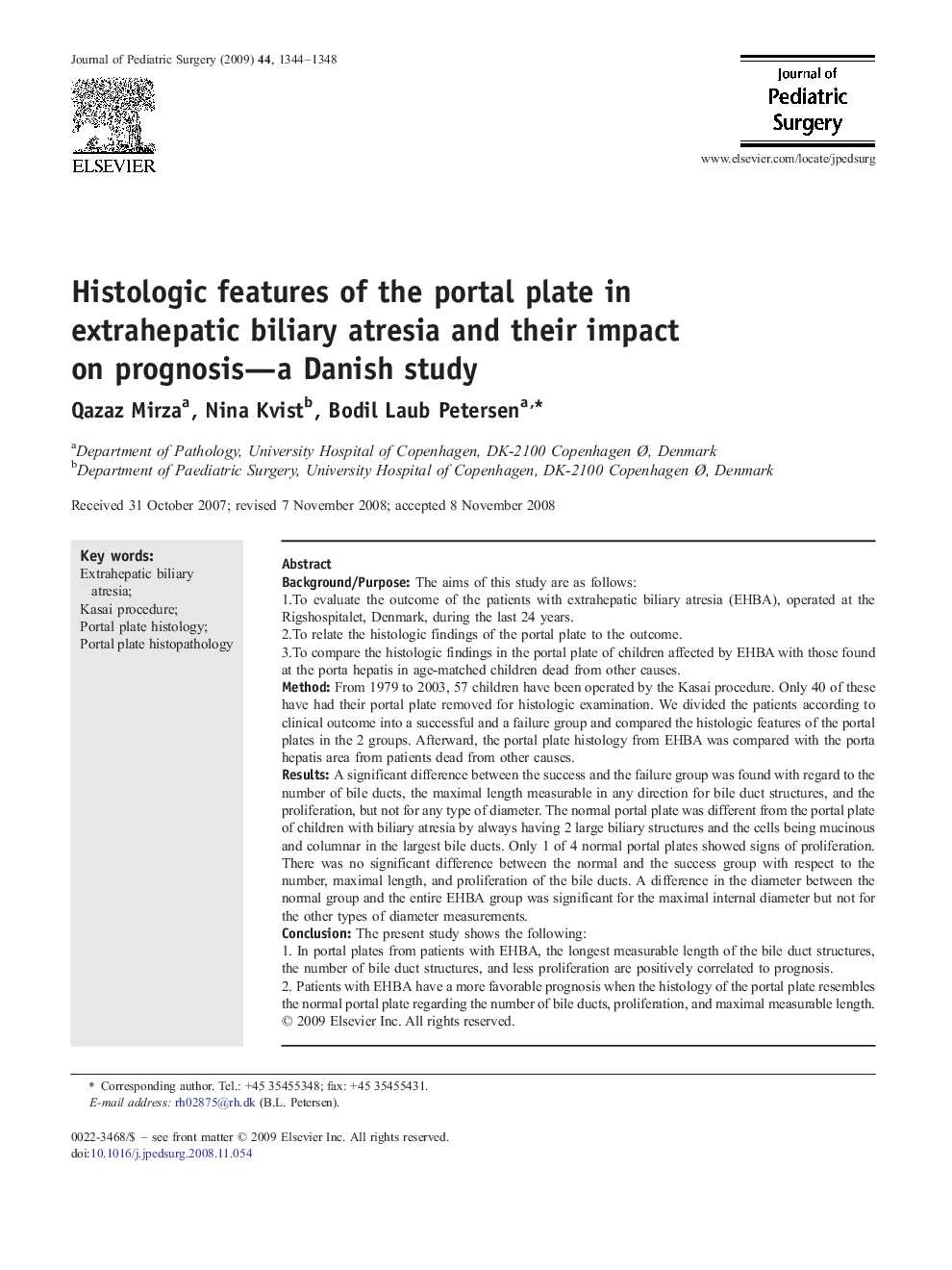| Article ID | Journal | Published Year | Pages | File Type |
|---|---|---|---|---|
| 4158016 | Journal of Pediatric Surgery | 2009 | 5 Pages |
Background/PurposeThe aims of this study are as follows:1.To evaluate the outcome of the patients with extrahepatic biliary atresia (EHBA), operated at the Rigshospitalet, Denmark, during the last 24 years.2.To relate the histologic findings of the portal plate to the outcome.3.To compare the histologic findings in the portal plate of children affected by EHBA with those found at the porta hepatis in age-matched children dead from other causes.MethodFrom 1979 to 2003, 57 children have been operated by the Kasai procedure. Only 40 of these have had their portal plate removed for histologic examination. We divided the patients according to clinical outcome into a successful and a failure group and compared the histologic features of the portal plates in the 2 groups. Afterward, the portal plate histology from EHBA was compared with the porta hepatis area from patients dead from other causes.ResultsA significant difference between the success and the failure group was found with regard to the number of bile ducts, the maximal length measurable in any direction for bile duct structures, and the proliferation, but not for any type of diameter. The normal portal plate was different from the portal plate of children with biliary atresia by always having 2 large biliary structures and the cells being mucinous and columnar in the largest bile ducts. Only 1 of 4 normal portal plates showed signs of proliferation. There was no significant difference between the normal and the success group with respect to the number, maximal length, and proliferation of the bile ducts. A difference in the diameter between the normal group and the entire EHBA group was significant for the maximal internal diameter but not for the other types of diameter measurements.ConclusionThe present study shows the following:1.In portal plates from patients with EHBA, the longest measurable length of the bile duct structures, the number of bile duct structures, and less proliferation are positively correlated to prognosis.2.Patients with EHBA have a more favorable prognosis when the histology of the portal plate resembles the normal portal plate regarding the number of bile ducts, proliferation, and maximal measurable length.
